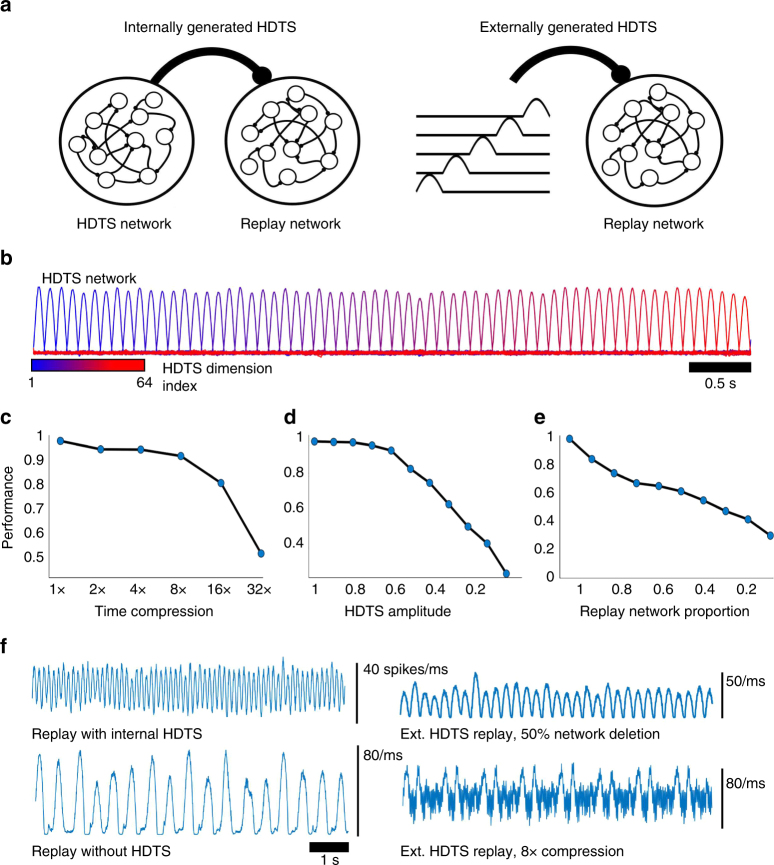Fig. 5.
Using spiking neural networks for pattern storage and replay: movie replay. a Two types of networks were trained to replay an 8 s clip from a movie. In the internally generated HDTS case, both an HDTS and a replay network are simultaneously trained. The HDTS projects onto the replay network similar to how HVC neurons project onto RA neurons in the birdsong circuit. The HDTS confers an 8 Hz oscillation in the mean population activity. In the externally generated HDTS case, the network receives an HDTS supervisor that has not been trained, but is simple to manipulate and confers a 4 Hz oscillation in the mean population activity. b The HDTS consists of 64 pulses generated from the positive component of a sinusoidal oscillator with a period of 250 ms. The color of the pulses denotes its order in the temporal chain or equivalently, its dimension in the HDTS. c The external HDTS is compressed in time which results in speeding up the replay of the movie clip. The time-averaged correlation coefficient between the teaching signal and network output is used to measure performance. d The HDTS amplitude for the network with an internal HDTS was reduced. The network was robust to decreasing the amplitude of the HDTS. e Neurons in the replay network were removed and replay performance was measured. The replay performance decreases in an approximately linear fashion with the proportion of the replay network that is removed. f The mean population activity for the replay networks under HDTS compression, removal, and replay network lesioning

